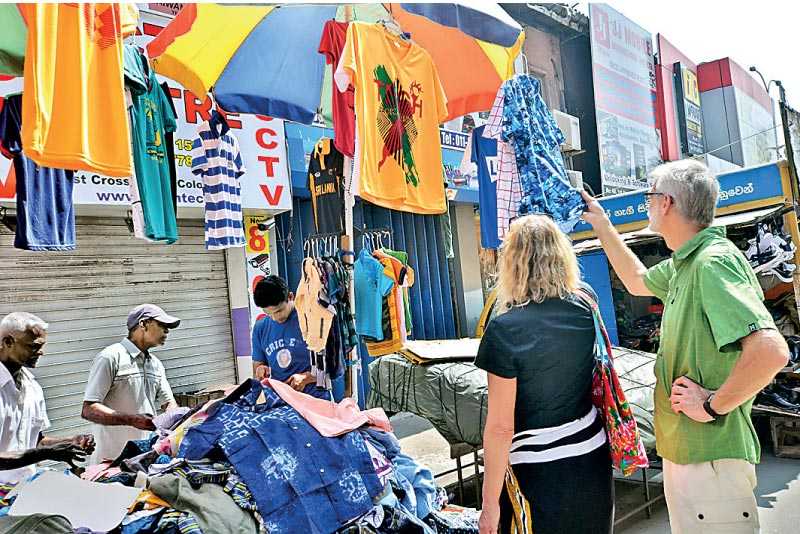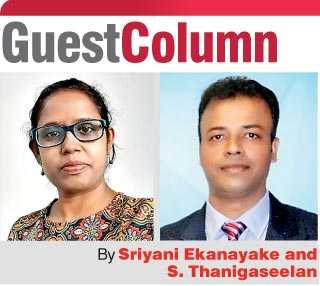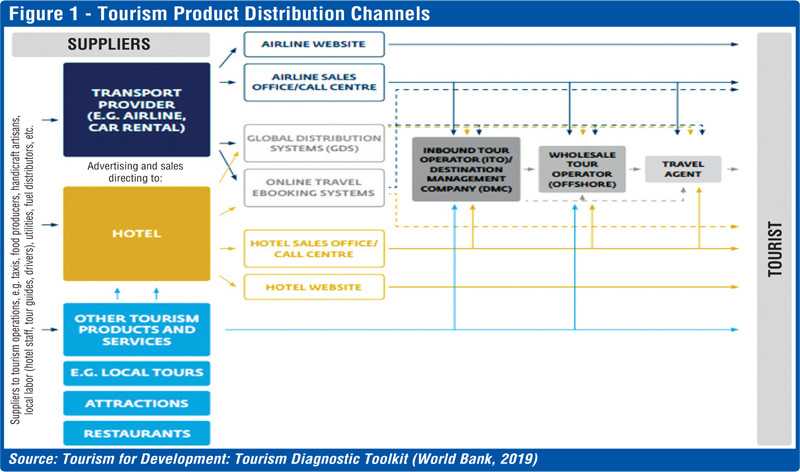Saturday Dec 20, 2025
Saturday Dec 20, 2025
Thursday, 1 April 2021 00:00 - - {{hitsCtrl.values.hits}}

SMEs, startups, and microbusinesses play an integral part in creating competitive solutions for visitors. Accordingly, we see great economic potential in developing their capacities and supporting their contribution to the tourism sector, which will also improve the livelihoods of communities that live around promoted destinations – Pic by Shehan Gunasekara
 Overview
Overview
Tourism makes an important contribution to provincial economic development targets laid out in the Government’s Policy Plan for Growth. The development of the tourism sector in Sri Lanka drives economic growth by contributing to employment, income generation, national output, and consequently, higher living standards. The tourism industry, which benefits transportation, accommodation, catering, entertainment, and retailing sectors, has been blooming in the past few decades.
Tourism has been a critical factor in the economic development strategy of many countries (Lea, 1988) and tourist destinations. In recent years, tourism has been one of the most important and consistent growth industries worldwide, and is currently held to be one of the major service industries (Bansal & Eiselt, 2004; Zang et al., 2004). But this industry was completely paralysed by the COVID-19 pandemic that began in 2020, following the Easter attack in 2019 in Sri Lanka.
The Government has taken several measures to rectify this loss and implemented them. Even though, it has not yet fully returned to normal. In this situation, the responsibility of rebuilding the sector lies with the Government sector, private sector, civil society and non-governmental organisations.
The industry needs to make all tourist destinations attractive to attract foreign tourists again by ensuring the quality services and products. So, we need to develop the cooperation of all of the above stakeholders to support to recover this sector. So, this sector needs to build the capacity and mentality of the workers involved to make local tourism products and services quality. Only then can we create employment opportunities for the unemployed people due to the corona pandemic and thereby raise their income and quality of life.
Challenges in destination development
There are some key challenges to face in developing the destination and attracting the visitor as given below:
Destination development and tourism employment
Destination development is essential to attract visitors and build the brand where the talent of producers and service providers must be built to keep the competencies. The market ultimately decides the boundaries of a destination, influenced by marketing, as well as physical and cultural limits. Thus, the market may perceive an entire country as a destination (as marketed by a tourism ministry) or a single national park, such as Peradeniya National Park in Kandy.
Destination development is the strategic planning and advancement of defined areas to support the evolution of desirable destinations for travellers, with a sole focus on the supply side of tourism, by providing compelling experiences, quality infrastructure, and remarkable services to entice repeat visitation.
So, generally to attract the visitors the industry has to ensure destination development planning has been identified to strengthen Sri Lanka’s tourism growth as given below:
1. Improve transportation to, from and within the Sunshine Coast
2. Attract, retain and train skilled workers and provide job growth
3. Enable tourism business success and viability
4. Manage the destination collaboratively
5. Implement product development and experience enhancement that cultivate a unique sense of place and,
6. Enhance the quality of services and experiences for our guests
By working together with local, regional and provincial agencies, indigenous communities, destination marketing organisations, industry organisations, and tourism operators, the strategies will guide the long-term growth of tourism experiences and revenues within the province.
The destination development itself can contribute to create employment and generate the income among the community surrounding the particular destination. In Sri Lanka direct and indirect employment in the tourism sector totalled 169,003 and 219,484 people respectively. Moreover, employment in this sector is likely to be larger than official figures (SLTDA, 2019). For example, a large number of tourism stakeholders operate without a valid license and their services are provided informally. They include positions such as tour guides and chauffeur tour guides. Direct employment is in hotels, travel agencies, airlines and other passenger transportation services, agencies providing recreational facilities, tourist guiding services, tourist shops and other organisations in the tourism sector.
Indirect employment includes businesses which sell goods and services to the tourism sector and family-owned small and medium enterprises which are not accounted in the official tourism figures (SLTDA, 2019). The pandemic’s impact for those not officially accounted for in the sector is substantial as they are unable to benefit from pandemic relief packages (ajhssr, 2020).
Developing the skilled workforce for the industry
The industry is facing a big challenge on skilled workforce. The skills system experienced that the enrolment for the tourism training courses are very limited while many students are enrolling into ICT courses since it has high profile within the society. Even, those who are following the standard courses are willing to go for a job opportunity abroad. There are many reasons that people are not attracted to the sector as skilled labour, like low salary, employment is based on seasonality, moving to regional tourism destinations in the country, etc. Sustainability of the industry, upskilling the existing tourism workforce in multi-tasking manner and providing the attractive training courses for the industry in short and flexible mode are very important ground factors to develop the skilled workforce for the industry.
Tourism value chain
As a cross-cutting industry, the tourism sector value chain touches almost all aspects of a country’s economy. There are several channels through which the impacts will be felt the deepest. Figure 1 shows the extensive supply-side channels which are being affected.
The Leaders International adopts a value-chain approach that involves all stakeholders in collaborative planning and execution to enhance the competitiveness and attractiveness of a specific destination. It brings together the government, the private sector, and civil society to advance the full range of activities and responsibilities that ultimately facilitate visitors’ experiences and bring tourists’ attention to the national product.
SMEs, startups, and microbusinesses play an integral part in creating competitive solutions for visitors. Accordingly, we see great economic potential in developing their capacities and supporting their contribution to the tourism sector, which will also improve the livelihoods of communities that live around promoted destinations.
Through our capacity-building programs, we lead innovation and development at tech startups, social enterprises, women cooperatives, tour operators, and manufacturers across the value chain. We also encourage the involvement of SMEs that work in alternative tourism, offer technological solutions, and target niche markets.
Conclusion
Due to the globalisation around the world the tourist destinations are also becoming highly competitive. The service providers and the destination marketers are keen to attract the tourists or visitors to their destinations and are participating in a variety of branding initiatives such as the use of taglines and logos in order to attract visitors to their respective destinations.
In order to develop the tourist destination to improve the higher living standard of the communities, many pillars need to come together since it is a central point. Better coordination and inter-sectoral dialogue among other sectors, both in national and regional level, inter-sectoral policy dialogue is key on the decision-making level.
It is vitally observed that the tourism development draws upon a multitude of disciplines and subject areas such as anthropology, business, communication, cultural, economics, geography, history, hospitality, politics, psychology, retailing, sociology, and transportation, etc. The destination integrated with all these areas which is contributing to create jobs and generate income, consequently the stranded of living will gradually up.
Footnotes

Sriyani Ekanayake is a Researcher in Labour Economics, Gender, Tourism sector and Education and S.Thanigaseelan is Assistant Director, National Human Resource Development Council of Sri Lanka, Ministry of Public Administration